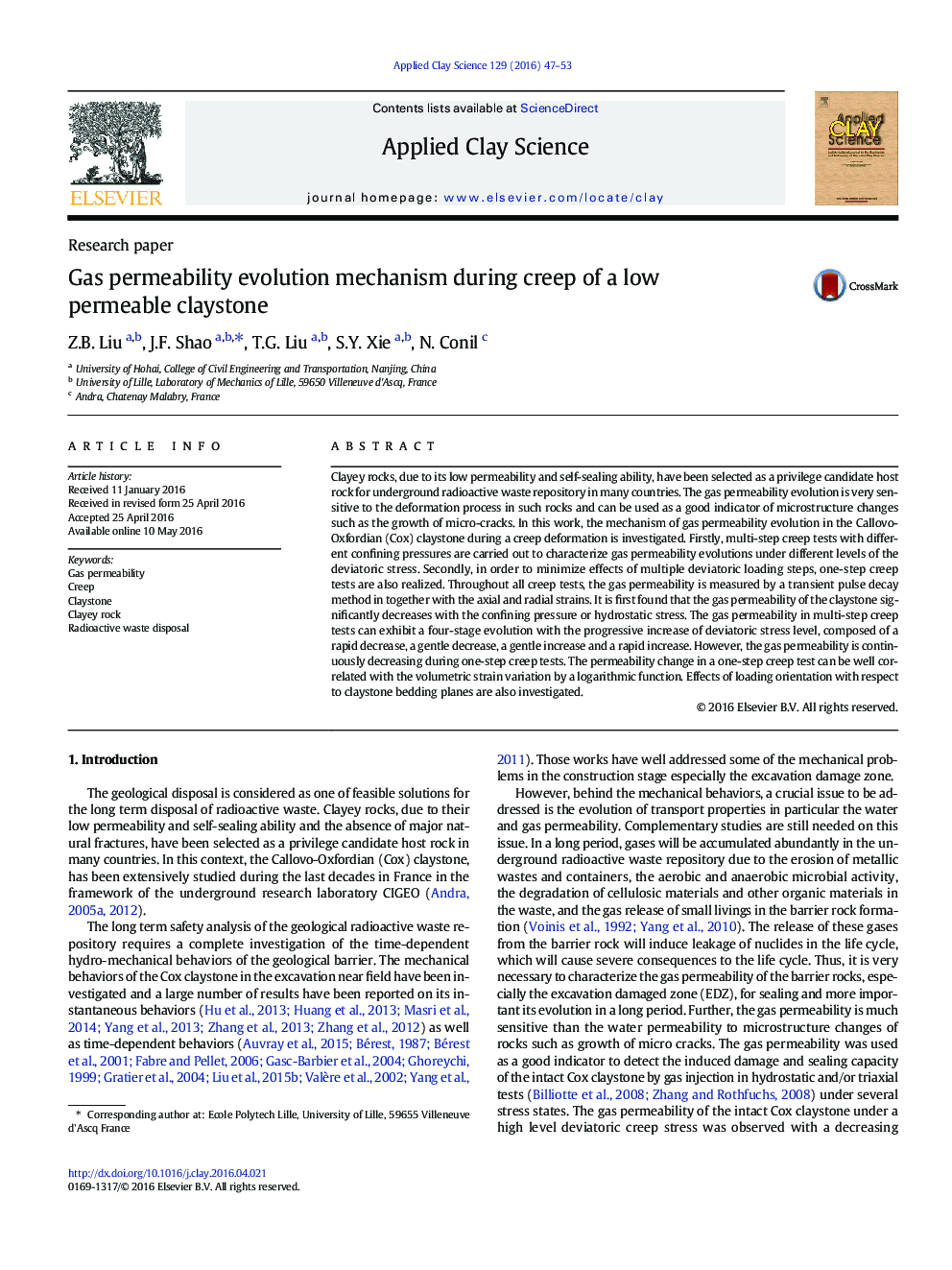| Article ID | Journal | Published Year | Pages | File Type |
|---|---|---|---|---|
| 1694022 | Applied Clay Science | 2016 | 7 Pages |
•Triaxial creep test with gas permeability measurement is realized on Cox claystone.•Permeability experiences from decrease to increase in progressive multi-step creep.•Permeability decreases monotonically in one-step creep.•Permeability change is observed correlated with volumetric creep strains.
Clayey rocks, due to its low permeability and self-sealing ability, have been selected as a privilege candidate host rock for underground radioactive waste repository in many countries. The gas permeability evolution is very sensitive to the deformation process in such rocks and can be used as a good indicator of microstructure changes such as the growth of micro-cracks. In this work, the mechanism of gas permeability evolution in the Callovo-Oxfordian (Cox) claystone during a creep deformation is investigated. Firstly, multi-step creep tests with different confining pressures are carried out to characterize gas permeability evolutions under different levels of the deviatoric stress. Secondly, in order to minimize effects of multiple deviatoric loading steps, one-step creep tests are also realized. Throughout all creep tests, the gas permeability is measured by a transient pulse decay method in together with the axial and radial strains. It is first found that the gas permeability of the claystone significantly decreases with the confining pressure or hydrostatic stress. The gas permeability in multi-step creep tests can exhibit a four-stage evolution with the progressive increase of deviatoric stress level, composed of a rapid decrease, a gentle decrease, a gentle increase and a rapid increase. However, the gas permeability is continuously decreasing during one-step creep tests. The permeability change in a one-step creep test can be well correlated with the volumetric strain variation by a logarithmic function. Effects of loading orientation with respect to claystone bedding planes are also investigated.
